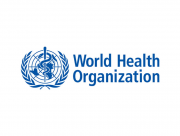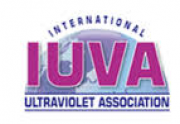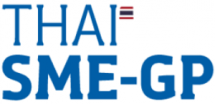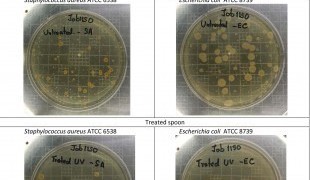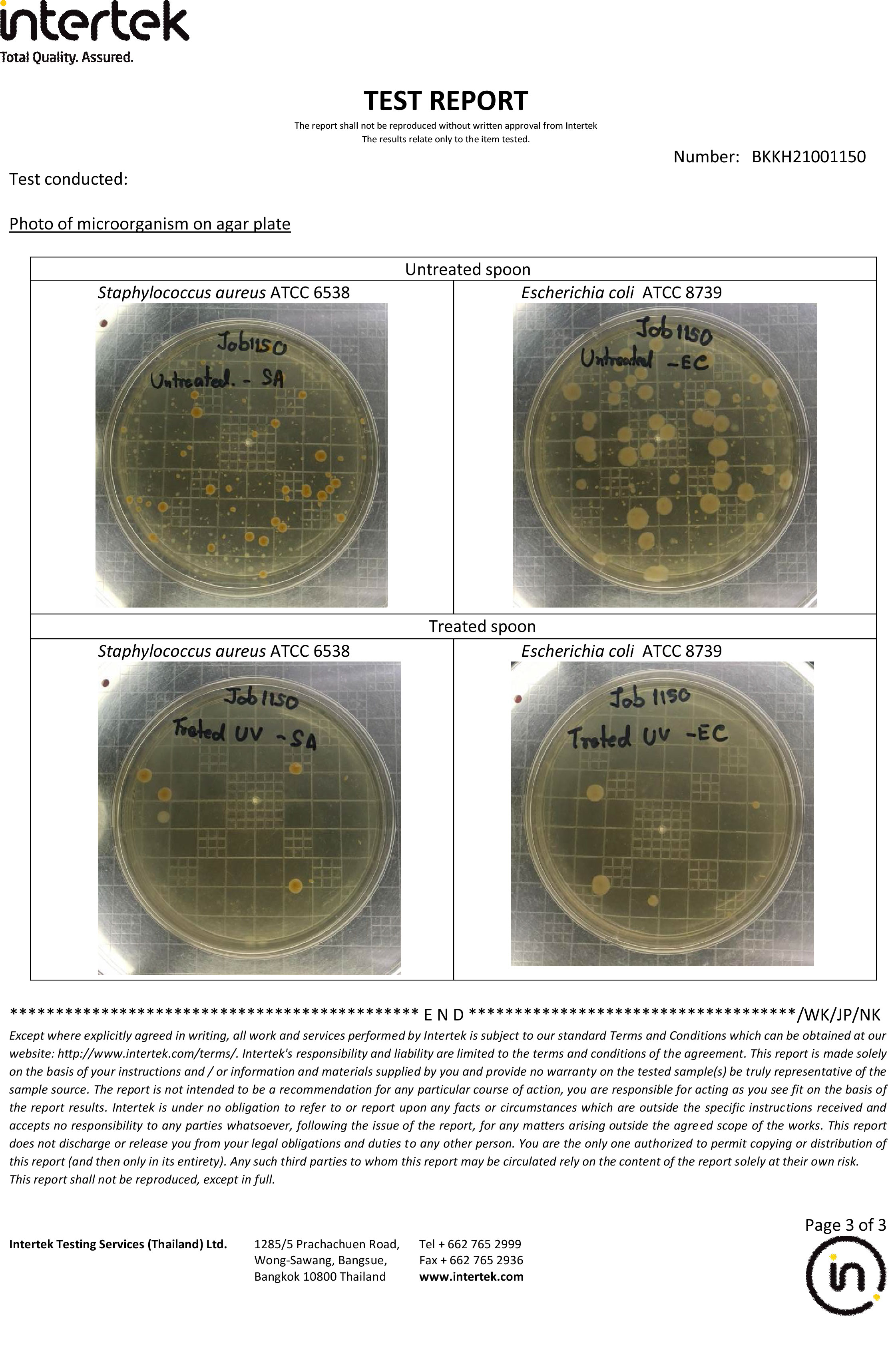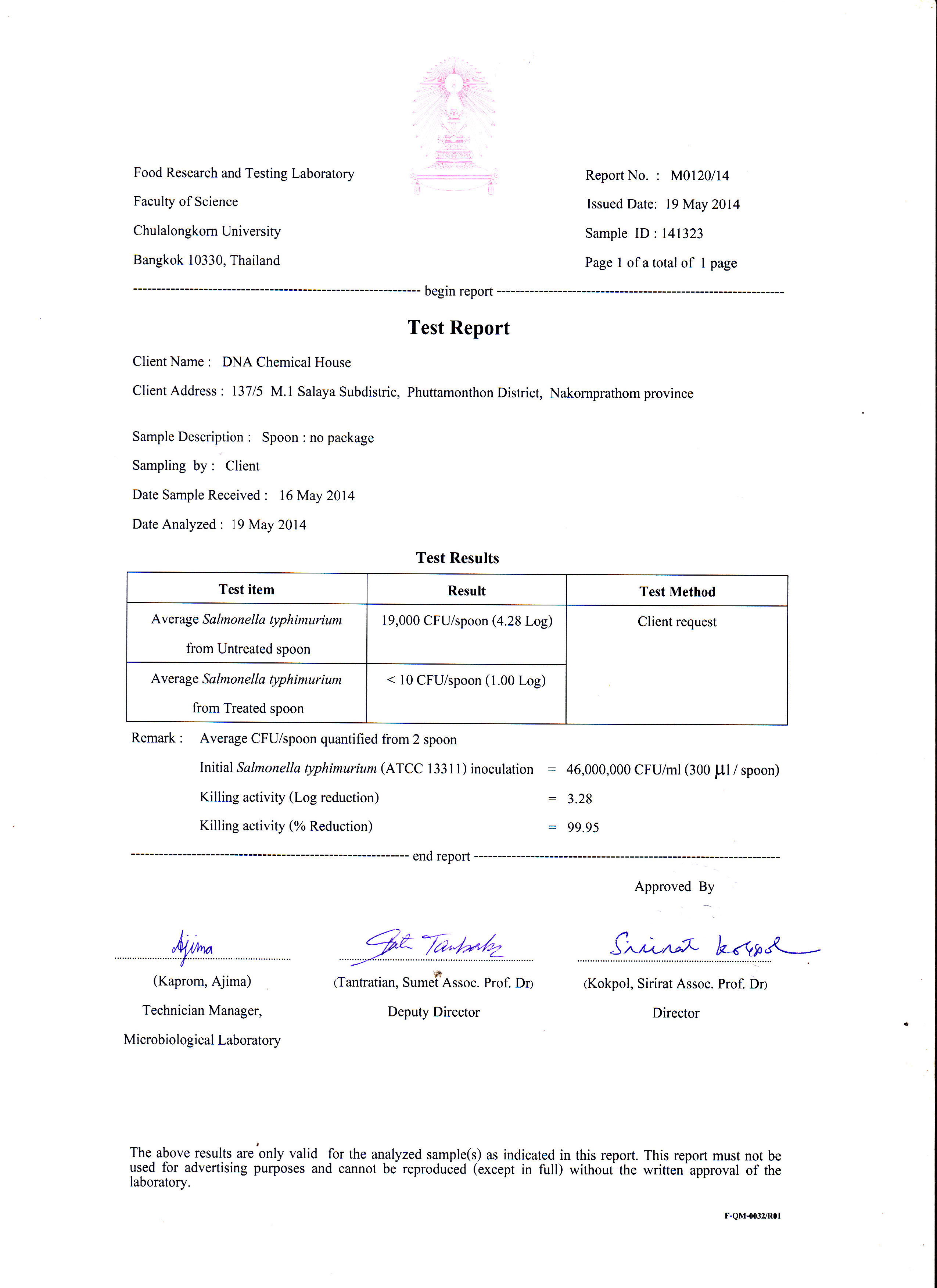Laboratory - การทดสอบคุณภาพการฆ่าเชื้อโรคจากสถาบันชั้นนำ
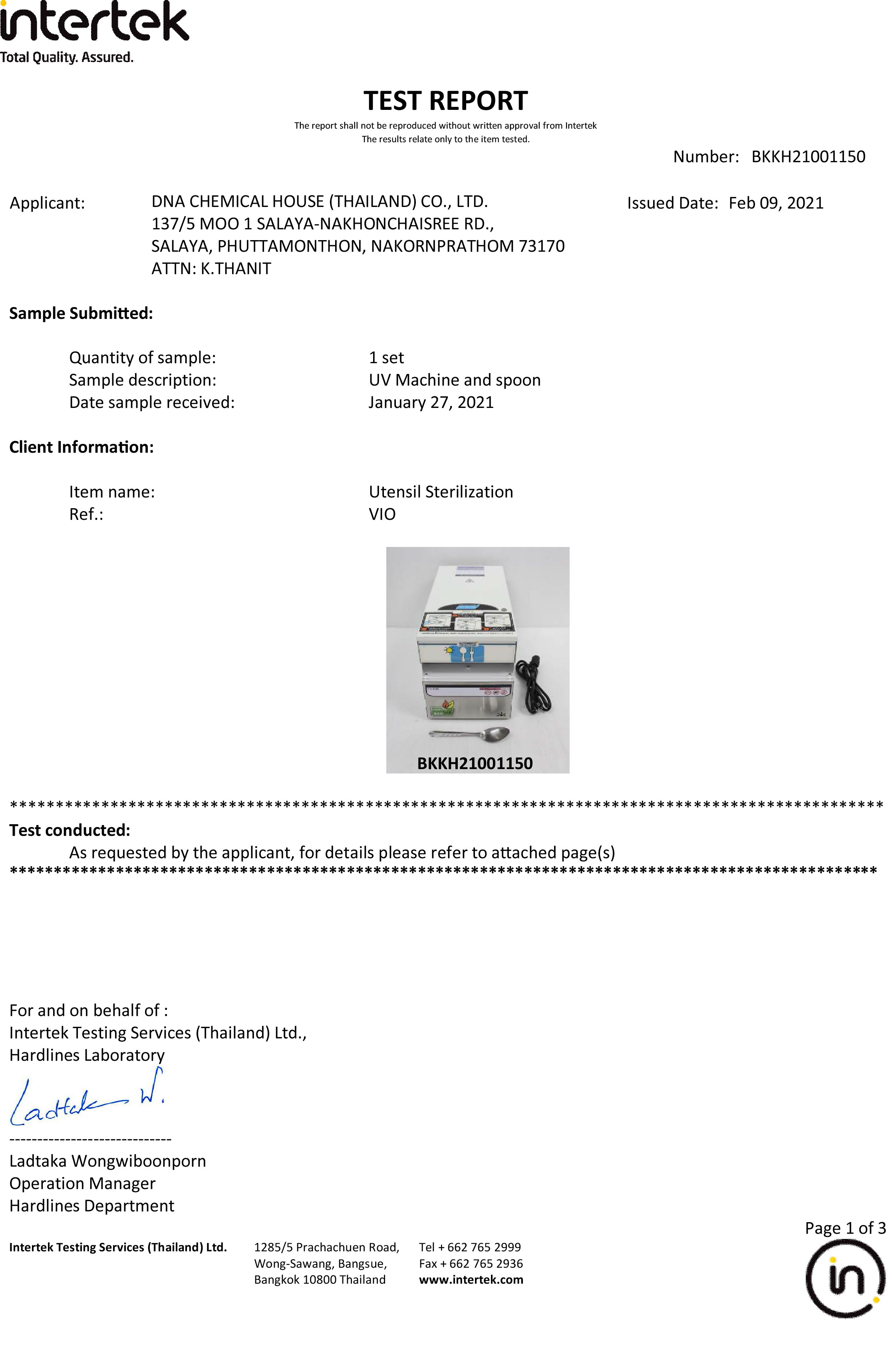
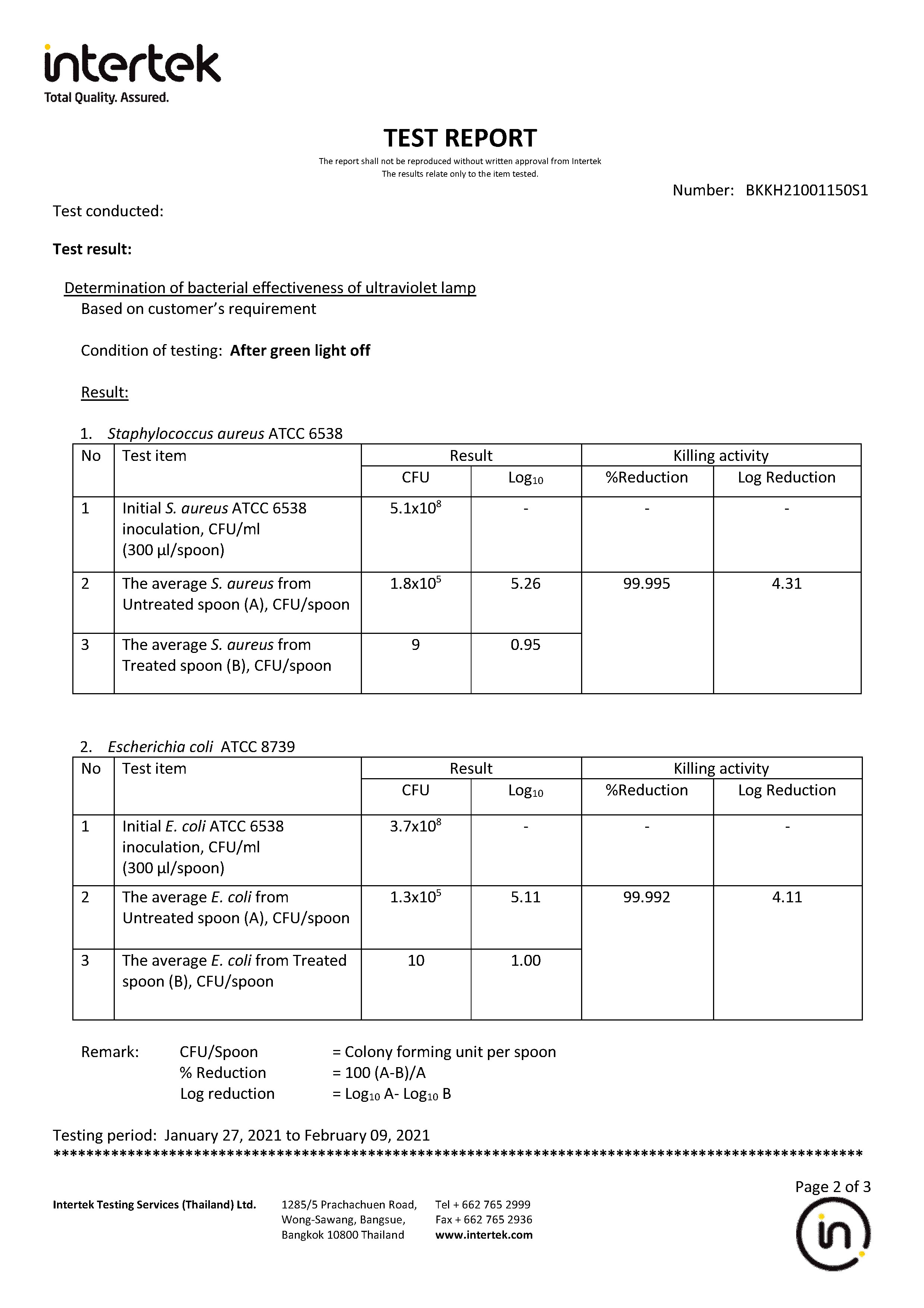
UV Irradiation Dosage Table
The following are incident energies of germicidal ultraviolet radiation at 253.7 nanometers wavelength necessary to inhibit colony formation in microorganisms (90%) and for 2-log reduction (99%):
VIOTECHE –Lights lamp produces 4,400 µW/cm² @ 2'
UV dose = UV intensity x time in seconds.To compute time needed to inactivate germs in the following chart at 2' distance divide the UV dose by 4,400.
Example:
for 99% kill factor of Infectious Hepatitis: 8,000 divided by 4,400 = 1.8 seconds.
|
Organisms: |
Energy Dosage of Ultraviolet radiation (UV dose) in µWs/cm2 needed for kill factor |
|
|
Bacteria |
90% |
99% |
|
Bacillus anthracis - Anthrax |
4,520 |
8,700 |
|
Bacillus anthracis spores - Anthrax spores |
24,320 |
46,200 |
|
Bacillus magaterium sp. (spores) |
2,730 |
5,200 |
|
Bacillus magaterium sp. (veg.) |
1,300 |
2,500 |
|
Bacillus paratyphusus |
3,200 |
6,100 |
|
65445Bacillus subtilis spores |
11,600 |
22,000 |
|
Bacillus subtilis |
5,800 |
11,000 |
|
Clostridium tetani |
13,000 |
22,000 |
|
Corynebacterium diphtheriae |
3,370 |
6,510 |
|
Ebertelia typhosa |
2,140 |
4,100 |
|
Escherichia coli |
3,000 |
6,600 |
|
Leptospiracanicola - infectious Jaundice |
3,150 |
6,000 |
|
Microccocus candidus |
6,050 |
12,300 |
|
Microccocus sphaeroides |
1,000 |
15,400 |
|
Mycobacterium tuberculosis |
6,200 |
10,000 |
|
Neisseria catarrhalis |
4,400 |
8,500 |
|
Phytomonas tumefaciens |
4,400 |
8,000 |
|
Proteus vulgaris |
3,000 |
6,600 |
|
Pseudomonas aeruginosa |
5,500 |
10,500 |
|
Pseudomonas fluorescens |
3,500 |
6,600 |
|
Salmonella enteritidis |
4,000 |
7,600 |
|
Salmonela paratyphi - Enteric fever |
3,200 |
6,100 |
|
Salmonella typhosa - Typhoid fever |
2,150 |
4,100 |
|
Salmonella typhimurium |
8,000 |
15,200 |
|
Organisms: |
Energy Dosage of Ultraviolet radiation (UV dose) in µWs/cm2 needed for kill factor |
|
|
Bacteria |
90% |
99% |
|
Sarcina lutea |
19,700 |
26,400 |
|
Serratia marcescens |
2,420 |
6,160 |
|
Shigella dyseteriae - Dysentery |
2,200 |
4,200 |
|
Shigella flexneri - Dysentery |
1,700 |
3,400 |
|
Shigella paradysenteriae |
1,680 |
3,400 |
|
Spirillum rubrum |
4,400 |
6,160 |
|
Staphylococcus albus |
1,840 |
5,720 |
|
Staphylococcus aureus |
2,600 |
6,600 |
|
Staphylococcus hemolyticus |
2,160 |
5,500 |
|
Staphylococcus lactis |
6,150 |
8,800 |
|
Streptococcus viridans |
2,000 |
3,800 |
|
Vibrio comma - Cholera |
3,375 |
6,500 |
|
Molds |
90% |
99% |
|
Aspergillius flavus |
60,000 |
99,000 |
|
Aspergillius glaucus |
44,000 |
88,000 |
|
Aspergillius niger |
132,000 |
330,000 |
|
Mucor racemosus A |
17,000 |
35,200 |
|
Mucor racemosus B |
17,000 |
35,200 |
|
Oospora lactis |
5,000 |
11,000 |
|
Penicillium expansum |
13,000 |
22,000 |
|
Penicillium roqueforti |
13,000 |
26,400 |
|
Penicillium digitatum |
44,000 |
88,000 |
|
Rhisopus nigricans |
111,000 |
220,000 |
|
Protozoa |
90% |
99% |
|
Chlorella Vulgaris |
13,000 |
22,000 |
|
Nematode Eggs |
45,000 |
92,000 |
|
Paramecium |
11,000 |
20,000 |
|
Virus |
90% |
99% |
|
Bacteriopfage - E. Coli |
2,600 |
6,600 |
|
Infectious Hepatitis |
5,800 |
8,000 |
|
Influenza |
3,400 |
6,600 |
|
Poliovirus - Poliomyelitis |
3,150 |
6,600 |
|
Tobacco mosaic |
240,000 |
440,000 |
|
Yeast |
90% |
99% |
|
Brewers yeast |
3,300 |
6,600 |
|
Organisms: |
Energy Dosage of Ultraviolet radiation (UV dose) in µWs/cm2 needed for kill factor |
|
|
Bacteria |
90% |
99% |
|
Common yeast cake |
6,000 |
13,200 |
|
Saccharomyces carevisiae |
6,000 |
13,200 |
|
Saccharomyces ellipsoideus |
6,000 |
13,200 |
|
Saccharomyces spores |
8,000 |
17,600 |
Part 2 : Overview on important viruses infecting humans and predicted UVC sensitivity
|
Organisms: |
Energy Dosage of Ultraviolet radiation (UV dose) in µWs/cm2 needed for kill factor |
|
|
Virus |
90% |
|
|
Human adenovirus A to F |
27,000-49,000 |
|
|
Lassa virus |
3,500 |
|
|
Astrovirus |
10,000-12,000 |
|
|
California encephalitis virus Hantaan virus |
2,000-3,500 |
|
|
Norwalk virus (NoV) |
9,700-11,000 |
|
|
Sapporo virus |
9,700-11,000 |
|
|
Hepatitis E virus |
9,700-11,000 |
|
|
SARS coronavirus |
700-1,100 |
|
|
Hepatitis D virus (assoc. to HBV) |
22,000 |
|
|
viruses causing haemorrhagic fevers: Marburg-, Ebola virus |
2,000 |
|
|
Hepatitis C virus |
6,800-8,400 |
|
|
Yellow fever virus |
6,800-8,400 |
|
|
Tick-borne encephalitis virus |
6,800-8,400 |
|
|
Hepatitis B virus (HBV) |
3,800-4,100 |
|
|
Herpes simplex virus 1, 2 |
3,500-7,000 |
|
|
Varicella zoster virus |
3,500-7,000 |
|
|
Cytomegalovirus |
3,500-7,000 |
|
|
Epstein Barr virus |
3,500-7,000 |
|
|
Human herpes virus 6, 7 |
3,500-7,000 |
|
|
Human herpes virus 8 |
3,500-7,000 |
|
|
Influenza virus A-C |
3,500-7,000 |
|
|
Polyomavirus |
68,000-103,000 |
|
|
Papillomavirus (warts) |
68,000-103,000 |
|
|
Measles virus |
3,000 |
|
|
Mumps virus |
3,000 |
|
|
Parainfluenza virus |
3,000 |
|
|
Organisms: |
Energy Dosage of Ultraviolet radiation (UV dose) in µWs/cm2 needed for kill factor |
|
|
Virus |
90% |
|
|
Poliovirus |
12,000-14,000 |
|
|
Coxsackievirus |
12,000-14,000 |
|
|
Echovirus |
12,000-14,000 |
|
|
Rhinovirus |
12,000-14,000 |
|
|
Smallpox virus, molluscum contagiosum |
1,800-4,300 |
|
|
Reovirus Human rotavirus A, B |
19,000-32,000 |
|
|
Human immunodeficiency virus (HIV) types 1 and 2 |
18,000-30,000 |
|
|
Human T-lymphotropic viruses (HTLV-1, -2) |
18,000-30,000 |
|
|
Rabies virus |
900-1,200 |
|
|
Rubella virus |
4,900-6,500 |
|
|
Human respiratory syncytial virus |
3,000 |
|
|
Parvovirus B19 |
2,100-3,200 |
|
|
Hepatitis A virus (HAV) |
12,000-14,000 |
|
The list of viruses was compiled according to a corresponding list published by the Robert Koch Institute in cooperation with the German Association for the Control of Virus Diseases and the German Society for Hygiene and Microbiology (RKI, DVV, DGHM 2004), according to the U.S. Departments of Health and Human Services (CDC 2004) and Büchen-Osmond 2003a, b). The predicted values for UVC sensitivity were adopted from Lytle & Sagripanti (2005).


